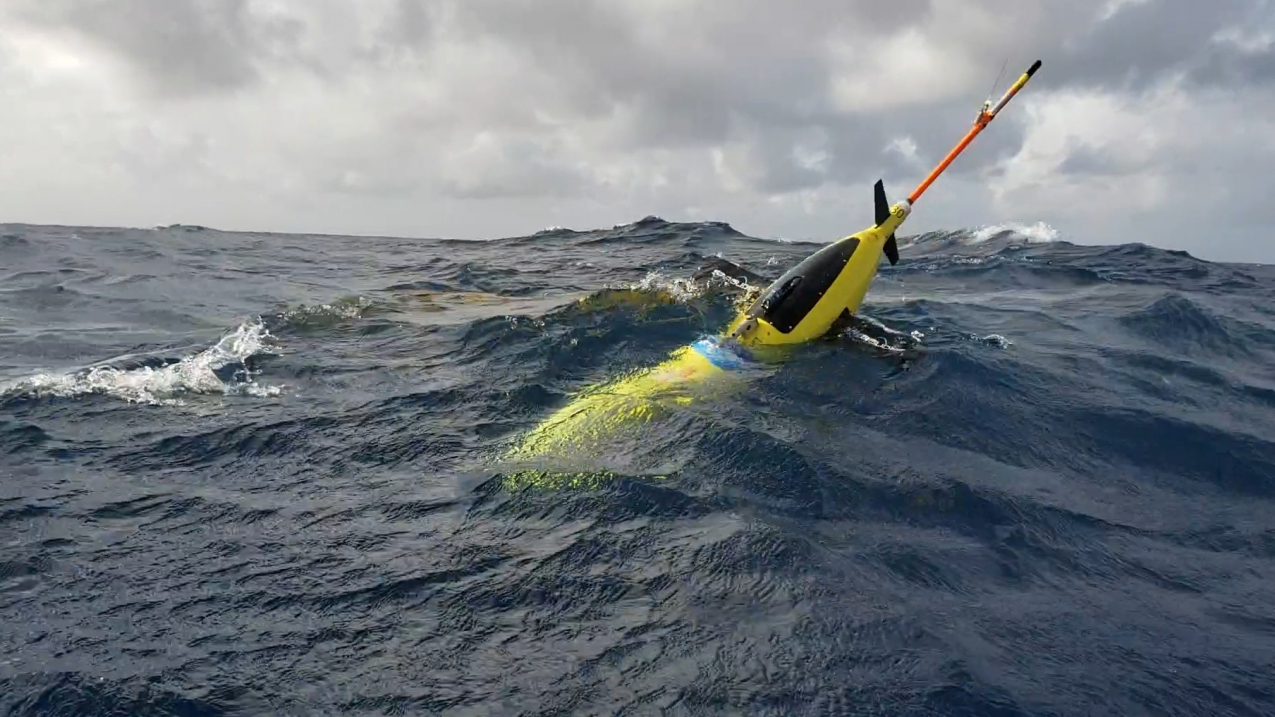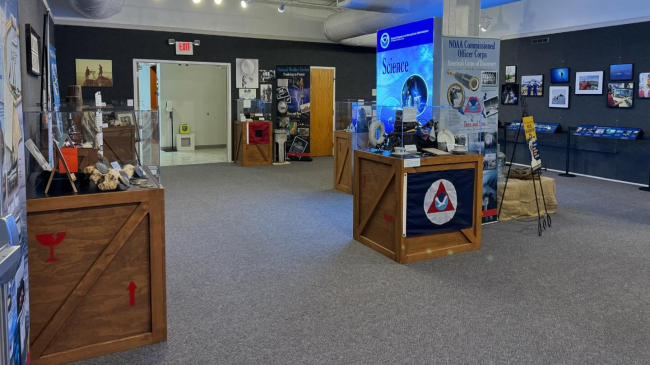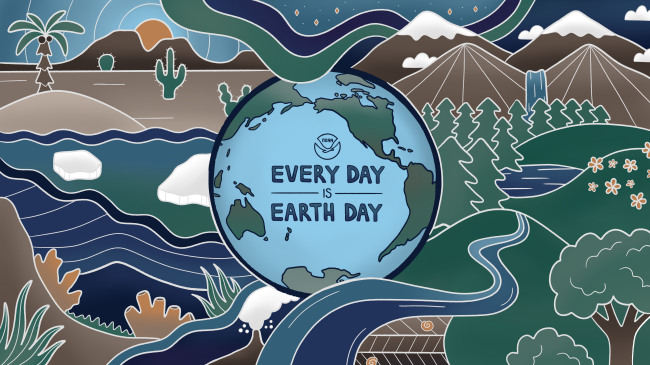2/19: Quote was added from the director of the White House Office of Science and Technology Policy.

A NOAA ocean glider, seen in waters off the coast of Puerto Rico in July 2018. These robotic, unmanned gliders are equipped with sensors to measure the salt content (salinity) and temperature as they move through the ocean at different depths. The gliders, which can operate in hurricane conditions, collect data during dives down to a half mile below the sea surface, and transmit the data to satellites when they surface. (Image credit: NOAA)
NOAA today released a set of final strategies to dramatically expand the agency’s application of three emerging science and technology focus areas — NOAA Unmanned Systems, Artificial Intelligence and ‘Omics — that will also guide transformative advancements in the quality and timeliness of NOAA science, products and services.
“NOAA already has robust experience with these applications across a range of mission areas and is delivering successful operational systems that are beginning to pay dividends, whether in helping to improve weather forecasts or fish stock assessments,” said retired Navy Rear Adm. Tim Gallaudet, Ph.D., assistant secretary of commerce for oceans and atmosphere and deputy NOAA administrator, speaking at the American Geophysical Union’s Ocean Sciences Meeting.
“These strategies will accelerate the implementation of the most effective science and technology applications to advance NOAA’s mission to protect life and property and grow the American Blue Economy,” said Gallaudet.
"NOAA’s strategies to expand the agency’s application of emerging science and technology are critical to advancing the economy, national security, and environmental interests of the United States," said Director of the White House Office of Science and Technology Policy Dr. Kelvin Droegemeier.
"For example, NOAA’s strategies on unmanned systems, artificial intelligence, and ‘Omics will be crucial to understanding our vast ocean resources. By emphasizing the need for partnerships among Federal agencies, the academic community, non-profit organizations and the private sector, NOAA is helping advance America’s ability to understand, manage, and conserve our ocean resources, which is a high priority for the Trump Administration,” said Droegemeier.
The strategies developed by NOAA include:
-
Unmanned Systems Strategy: In recognition of the opportunities unmanned systems present for addressing NOAA's mission priorities, the NOAA Unmanned Systems Strategy provides a framework to efficiently provide requirements-driven, safe, cost-effective, and compliant Unmanned Systems services across the agency. It also prioritizes strategic investments in Unmanned Systems applications and technologies that fuel innovation and strengthen operations, and accelerates and enhances capabilities through partnerships.
-
Artificial Intelligence Strategy: The overarching goal of the NOAA Artificial Intelligence (AI) Strategy is to utilize AI to advance NOAA’s requirements-driven mission priorities. Through this strategy, NOAA seeks to reduce the cost of data processing, and provide higher quality and more timely scientific products and services for societal benefits.
-
'Omics Strategy: In recognition of the opportunities and challenges presented by the advent of tools associated with ‘omics — a suite of advanced methods used to analyze material such as DNA, RNA, or proteins — the NOAA ‘Omics Strategy provides a framework to advance the application of ‘omics to address mission priorities. The strategy leverages NOAA’s current organizational structure to more effectively implement ‘omics through improvements in computational and analytical capacities, targeted research, technology transition, workforce proficiency, and partnerships across NOAA’s lines, federal agencies, and extramural research and commercial communities.
These final strategies include input received during a public comment period last year. A draft version of a fourth strategy, NOAA’s Cloud Strategy, is being finalized for a later release.
More about the strategies
NOAA developed these strategies in accordance with guidance provided by the Administration and Congress, including the Presidential Memorandum on Ocean Mapping, the Office of Science and Technology Policy FY21 Research and Development Priorities letter, the National Science and Technology Council report “Science and Technology for America’s Oceans: a Decadal Vision,” the Executive Order on Maintaining American Leadership in Artificial Intelligence, the Commercial Engagement Through Ocean Technology (CENOTE) Act, and the Federal Cloud Computing Strategy.
They also support the goals of the Weather Research and Forecasting Innovation Act of 2017 and the National Integrated Drought Information System Reauthorization Act of 2018, for example, to improve weather models and observations as well as the efficiency of NOAA’s computing resources.
Media contact
Chris Vaccaro, (202) 482-3978



